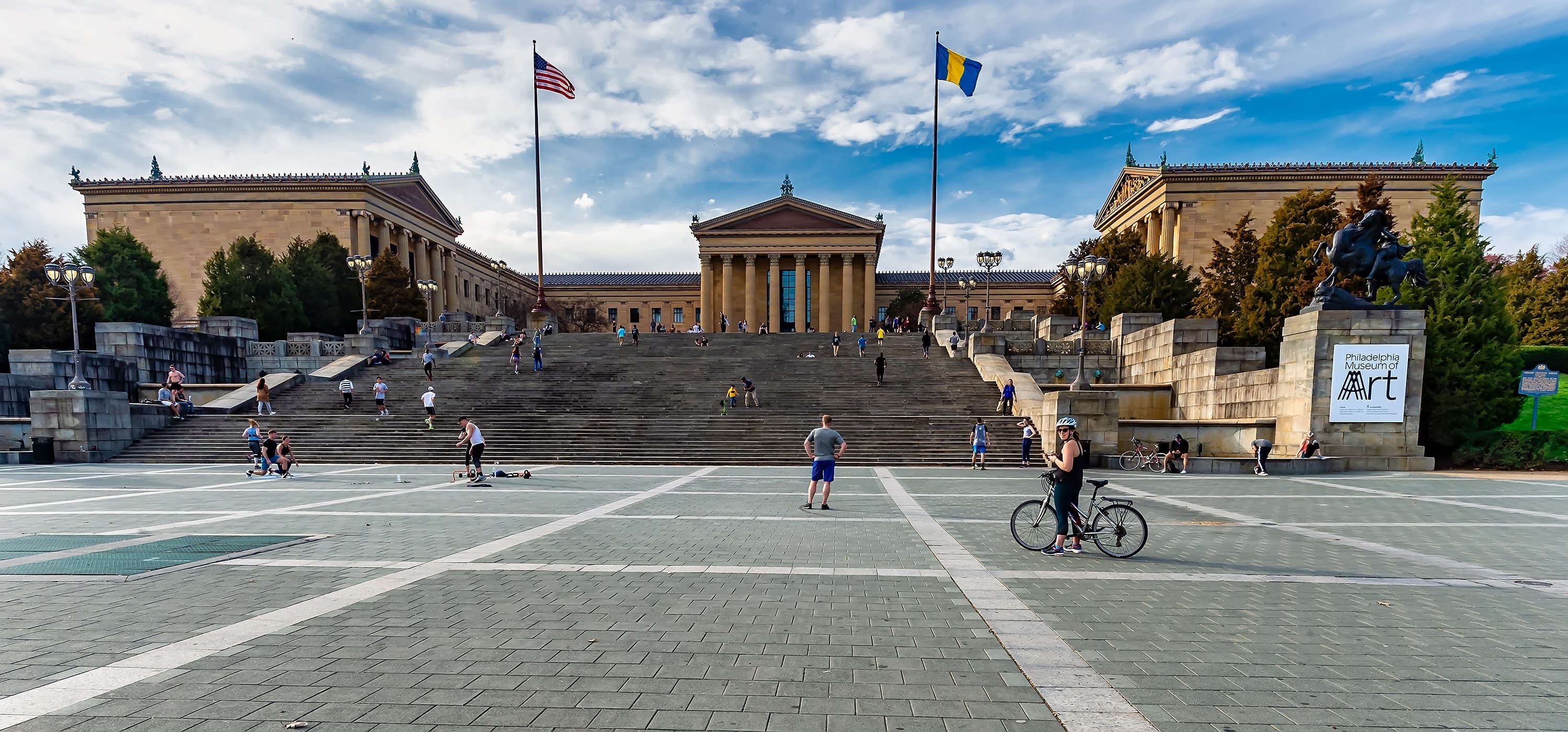
Last week, Philadelphia Mayor Jim Kenney revealed his revised budget proposal for fiscal year 2021, which, if approved, would implement drastic cuts to the arts in an attempt to counteract losses incurred by the pandemic.
Among those cuts would be the elimination of the Office of Arts, Culture, and the Creative Economy, a government branch that provides grants to hundreds of cultural organizations in the area, and which cost the city $4.4 million last year. Kenney’s budget would also do away with the Philadelphia Cultural Fund, a 25-year-old program that distributed $3 million through nearly 350 grants to creative institutions last year.
Mural Arts, which promotes and funds public works of art in the city, would have its budget reduced from $2.45 million to $2 million, and the funding provided to the Philadelphia Museum of Art—the city’s biggest institution—would be slashed from $2.55 million to just over $2 million.
Philadelphia Mayor Jim Kenney. Photo: Bastiaan Slabbers/NurPhoto via Getty Images.
For the city’s cultural leaders, the news came as a sign that the city devalues their work.
“The mayor taking this kind of action during a pandemic just underscores the notion that the arts are disposable, that they are something that we don’t need during this moment of crisis,” says Christina Vassallo, director of the Fabric Workshop and Museum in Philadelphia. “It sets up this false dichotomy that pits culture against the livelihood and the economy.”
Like many major institutions in the city, the Fabric Workshop and Museum receives only a fraction of its budget from city grants. (It was awarded $10,000 in operational support last year from the Philadelphia Cultural Fund.) But to smaller organizations, such money is critical.
“That’s a small part of our budget, but it means the world to many smaller organizations that receive this funding,” says Vassallo, explaining that the mayor’s decision could “completely decimate the grassroots cultural scene in this city.”
Symbolically, she adds, the loss is much greater. “It further supports the notion that those of us who work in a non-profit arts field should just get used to doing more with less,” says Vassallo. “We’re constantly expected to do more with less. It’s an affront to humankind, really!”
The Fabric Workshop and Museum in Philadelphia. Courtesy of the museum.
“The sweeping reductions to arts and culture in the revised budget sends a message to these organizations—and their dedicated employees—that their work isn’t valued,” says Maud Lyon, president of the Greater Philadelphia Cultural Alliance, which counts more than 450 arts organizations across the five-county Philadelphia region as members.”
Lyon notes that the arts and culture sector is a significant economic force in the region, generating an estimated $4.1 billion annually and more than 55,000 jobs, according to a 2017 economic impact report conducted by the Cultural Alliance.
“Ultimately,” she says, “our audiences are hurt the most by these proposed cuts as we risk eliminating the performing arts, community arts programs, and diverse creative expression, which have defined Philadelphia for decades and even centuries.”
The 2021 fiscal year begins June 1. Prior to that date, the mayor’s budget proposal will be reviewed by the city council before it’s formally adopted.
“Potential elimination of the Office of Arts, Culture, and the Creative Economy would be a difficult loss because it would limit the city’s ability to work collaboratively with one of the region’s great economic drivers, the arts and culture sector comprised of many organizations small and large,” says Timothy Rub, the director and CEO of the Philadelphia Museum of Art, in a statement.
“I hope that the city can continue to recognize that this public-private partnership will be an important part in helping Philadelphia recover from the pandemic and prosper in the future.”
For many cultural organizations in Philadelphia, the news from the mayor’s office came at the end of a particularly hard week. In an effort to reduce his own budget, Pennsylvania Governor Tom Wolf directed the Pennsylvania Council on the Arts to retract grant money already awarded to certain arts organizations across the state, according to The Philadelphia Inquirer.